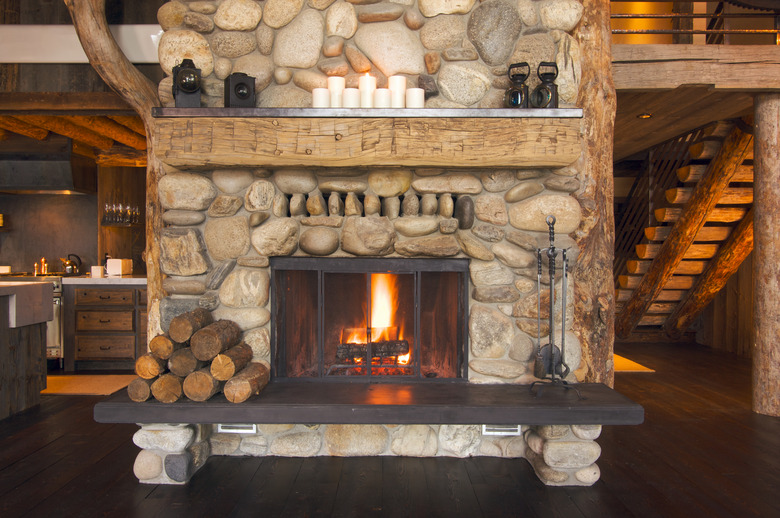Gas Starters In Fireplaces And Safety
We may receive a commission on purchases made from links.
The warmth and glow of a crackling fire is relaxing, but fumbling with newspaper and kindling to start the fire is anything but relaxing. Gas starters, also called log lighters, in wood-burning fireplaces can make your life a lot easier. The addition lights your logs quickly and easily with no fire-building skills required. Understanding how log lighters work lets you operate yours safely.
What Is a Gas Starter?
What Is a Gas Starter?
A gas starter is a metal pipe, often made of cast iron or stainless steel, with evenly spaced holes along it. The pipe typically goes underneath your fireplace grate so it's below the logs. It helps light the fire in your wood-burning fireplace. Gas starters require a professionally installed gas line running to the fireplace. They can be powered by natural gas or propane.
Benefits of Log Lighters
Benefits of Log Lighters
The biggest advantage of a gas starter for your wood-burning fireplace is the convenience. Instead of crumpling paper, preparing kindling, and stacking everything perfectly, you simply turn on the gas and light the fire. It's much faster than traditional fire-starting methods since the gas helps ignite the logs. Since it uses gas, the log lighter works even when your power is out, so you have an available heat source during outages.
How to Use Gas Starters
How to Use Gas Starters
Using a gas start to light your wood-burning fireplace is an easy process. However, following the steps precisely is essential for safety. The process is generally similar for any gas starter, but it's a good idea to review the instructions for your specific model to verify the process.
- Clean any debris out of the fireplace.
- Arrange the logs on the fireplace grate.
- Make sure the flue is open before you light your fire.
- Grab your gas key but don't turn on the gas yet.
- Light your long match or have your long lighter in your hand and ready to go.
- Use the gas key to turn the gas valve a quarter turn.
- Light the gas starter using your match or lighter immediately. Don't wait after you turn on the gas. If it doesn't light within a few seconds, shut it off and wait at least five minutes before trying again.
- Open the valve the rest of the way once the log lighter is lit.
- Let the log lighter run for no more than 10 minutes to get a good fire going. Shut off the gas once your logs catch on fire.
- Check the gas again to verify that you turned it off completely.
Log Lighter Safety
Log Lighter Safety
A gas starter is safe to use when you follow the operating instructions precisely. However, gas mixed with open flames can cause a very dangerous situation if something goes wrong or if you use it incorrectly.
Follow safety guidelines to prevent an issue:
- Use professional installation for the gas line to prevent problems.
- Read the log lighter instruction manual before using it.
- Only use the gas starter to light the logs initially. Don't turn the gas back on to keep the fire going.
- Ensure the fireplace and gas starter have plenty of airflow.
- Double-check the gas line to ensure you shut it off after lighting the fire. Leaving it on can cause a gas leak or an explosion.
- Wait to turn on the gas until you're ready to light the fire. Have your match lit or your lighter ready to go. If you leave the gas on, it can build up and cause a little explosion in the fireplace.
- If you smell gas when you don't have the log lighter turned on, get out of the house and call 911 or the gas company. Gas leaks can cause physical symptoms and result in a fire or explosion, so don't wait or take chances.
Other Fireplace Safety Considerations
Other Fireplace Safety Considerations
General fireplace safety guidelines also apply with a gas starter. Regularly cleaning your fireplace and chimney ensures a clear flue and removes creosote, which is highly flammable. A professional inspection at least once per year helps spot deterioration and other issues that make the fireplace unsafe.
Use dry, dense wood for fires. Green wood typically creates more creosote in your fireplace. Use a fireplace guard to prevent the embers from getting out of the firebox.
